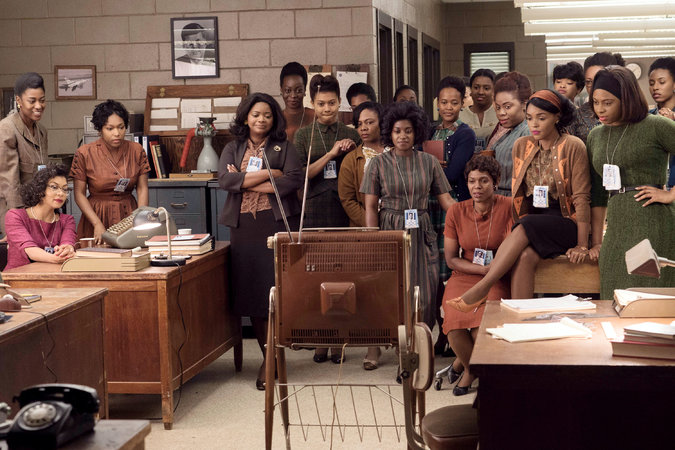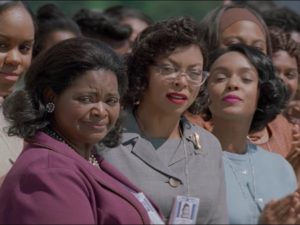
Based on a true story, Hidden Figures skillfully captures a little-known chapter in the Cold War space race between the Soviet Union and the U.S. in the early 1960s. With the backdrop of the Russians seizing the early lead and the anemic American response, the movie recounts the true story of the critical and extraordinary role of an extremely intelligent group of African American women who were hired by NASA to analyze the myriad of calculations that were needed to successfully launch the original Mercury astronauts. The fact that all the women were initially segregated and housed in a separate building at the NASA center in Langley, Virginia with a sign designating them as ‘COLORED COMPUTERS’ provides the powerful backstory to their struggles … and subsequent achievements.

Three of the actual heroines depicted in the film, Katherine Johnson (portrayed by Taraji P. Henson), Dorothy Vaughan (portrayed by Octavia Spencer), and Mary Jackson (portrayed by Janelle Monáe) are prominently featured based on their mathematical genius as well as their equally demanding challenges as wives and mothers in the segregated society of Northern Virginia during that period. As chronicled in Dava Sobel’s book The Glass Universe, these women were every bit as capable as men despite being forced to work under less-than-favorable conditions.
Notwithstanding their considerable intellect, they still had to overcome the prejudice and racism of their white colleagues at NASA. Sadly, the film exposes an aspect of the storied organization’s bigoted culture that has certainly not been part of its folklore. “Failure may not have been an option” to safely return the Apollo 13 astronauts to earth, but in the early 1960s equality for women and people of color clearly wasn’t even an objective for NASA. This type and level of discrimination was depicted perfectly when one of the women, Katherine Johnson, was temporarily reassigned to the central engineering department that had an all male white staff. As soon as she entered the room she was handed a trash can by one of the men, and scolded that it had not been emptied the night before. There’s also a whole storyline, (sometimes comical, but mostly unbelievably frustrating and infuriating) that deals with the conundrum of segregated bathrooms.
Halfway into the film there’s a moment when a head NASA engineer refuses the request of Mrs. Johnson to attend an editorial meeting about John Glenn’s upcoming mission to become the first American to orbit the Earth. The supervisor’s response was snippy and dismissive—”There’s no protocol for women attending.” Undeterred, Johnson quipped, “There’s no protocol for a man circling Earth either, sir.”
The eventual “lift-off” for the story occurs as NASA realizes that in order to get John Glenn into space and home safely, all of its institutions that had supported prejudices and biases needed to start tumbling down. All hands (and brains) had to be on deck if the organization was going to successfully reach for the stars.

This was an important story that needed to be told, and the lessons in it are timeless reminders to us all to never determine someone’s worth based on their gender or skin color. It makes people realize how incredibly far we have come as a society, teaching us about the struggles previous generations endured and overcame to pave the way for those who followed. Although our society is still terribly flawed, and racial and gender inequalities still exist, the movie serves as a testament to how motivation and true talent trump obstacles in the way.
My father, who attended this movie with me, was extremely moved by it, especially since this is a time period he vividly recalls. He shared, “It was as if I was in a time capsule and was shown an area (NASA’s discrimination) that I had not known about. It made the achievements of the COLORED COMPUTERS all the more remarkable.”
I highly recommend Hidden Figures, and will definitely be going to see this movie again. As the mother of a nine year old daughter, it’s a movie that I want her to watch too because it’s so very powerful and inspiring. I walked out of the theater full of admiration for these amazing, unsung heroes and applauding the exceptional acting of the actresses who portrayed them.

Movie times: click here
Genre: Drama
Director: Theodore Melfi
Actors: Taraji P. Henson, Octavia Spencer, Janelle Monáe
Rating: PG for thematic elements and some language
Running Time: 2 hours 7 minutes




